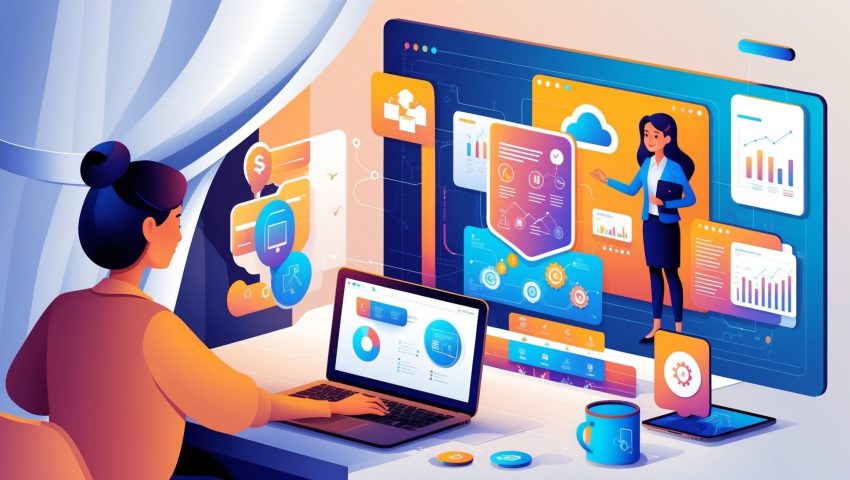How I Built a $30K Per Month Digital Product System
“It started with $10 and a big ol’ knot in my stomach.”
That’s what I always tell people when they ask how I built a $30K per month digital product system. And I’m not exaggerating. Ten dollars. That’s all I could stomach to spend on ads in the beginning. When you’re a single mom raising three kids, you don’t throw money around—especially not on something that might work.
But it did work. And now I want to walk you through the exact system I used so you can build your own.
Because I get it. You’re probably reading this while reheating coffee for the third time today, wondering if this online thing can actually change your life. And it absolutely can.
The Aha Moment: Realizing Ads Were the Missing Link
For years, I dabbled in side hustles. I did the Etsy thing. Tried affiliate marketing. Even ran a short-lived coaching business between naps and school pickups.
But none of it stuck. You know why? Because I was hustling for every sale. If I wasn’t posting, promoting, or pitching, nothing happened. I wasn’t building a system—I was building a second job.
The turning point came when I realized that digital products could sell without me—if I used ads to drive traffic to a simple, focused offer.
And here’s the kicker: I didn’t need a full-on funnel, a million freebies, or a weekly content calendar. I just needed one really good product and a strategy to keep eyeballs on it.
What I Sell (Spoiler: It’s Not What You Think)
My first winning product was an ebook. Not a novel, not a 300-page how-to manual. Just a compact, sharply-written, highly specific guide based on something I knew inside and out.
I called it: “The Loop System: How to Create a Self-Selling Digital Product That Works While You Rest”
It was built for people like me—burned-out creators and overwhelmed moms who didn’t want to run 10 different platforms, build a team, or create a course with 40 video modules.
My entire model is based on one product, one page, one platform.
Why It Works:
-
It’s specific.
-
It solves a real problem.
-
It doesn’t require daily engagement.
-
It’s priced accessibly (under $50).
Step 1: Build the Product
Let’s start at square one. You can’t sell a digital product if you don’t have one.
For me, that looked like:
-
Choosing a topic I had real experience with.
-
Outlining the problem I wanted to solve.
-
Writing the content in Google Docs between school drop-offs and music lessons.
-
Designing the layout using Canva and exporting as a PDF.
That’s it. You don’t need to hire anyone. Don’t get hung up on perfection—get hung up on clarity. If someone can read your sales page and say “YES, this is for me,” you’ve nailed it.
Step 2: Create the Pitch Page (Keep It Simple!)
Here’s where a lot of people overthink it. Your pitch page should be as simple as your product. No scrolling forever. No endless testimonials. Just:
-
Headline: Show the transformation.
-
Problem: Identify what’s holding them back.
-
Solution: Introduce your product.
-
Proof: Share your story or results.
-
Call to Action: A clear buy button.
Mine is black background, white text, bold headline. No fluff. Just facts and a feeling.
I always say: the product is the pitch, the pitch is the proof, and the sale is the system.
Step 3: Run Pinterest Ads (Yes, Pinterest!)
Everyone’s screaming about TikTok, Instagram, and YouTube right now—but Pinterest is where the real magic happened for me.
Why?
-
Pins live forever.
-
It’s a search engine, not a social network.
-
People come to shop, not just doom scroll.
-
Ad costs are cheaper than Meta and Google.
I started with $10. Then $15. Then $30. Once I saw that my system was making more than it cost to run the ads, I scaled like a wild woman.
I now spend anywhere from $150–$300/day on Pinterest, and the return? More than 10x. I can literally trace $30K/month back to just this one platform.
Step 4: Loop It
Here’s the secret sauce: I built a loop.
Every sale funds the next ad. Every product leads to another pin. Every pin links to the same product. I’m not scattering my energy across 10 different things. I’m doubling down on what works.
That’s why I call it The Loop System. It keeps going, even if I take a day (or week) off. It scales without chaos.
Want more sales? Add more pins. Want more reach? Add more keywords. Want more products? Duplicate what worked.
Each loop fuels the next.
Why This Works for Moms (and Honestly, Anyone)
Let’s be real—this whole system was born out of survival. I didn’t have time to post 10 times a day or write 30 emails a month. I had:
-
School lunches to make.
-
A full-time job to hold down.
-
Kids who got sick at the worst times.
-
Dreams I couldn’t ignore anymore.
This system respects your time. It doesn’t require you to be “on” all the time. You set it up once. Then optimize as you go.
It’s not easy, but it’s simple—and that’s the key difference.
My Favourite Tools
Here’s the tech stack that built my empire (and it’s super lean):
-
Canva – for designing everything (ebook, pins, graphics).
-
ThriveCart – for sales pages and checkout.
-
Pinterest Ads Manager – for all promotions.
-
Google Docs – for writing my ebook and keeping notes.
That’s literally it. No complicated funnel tools. No endless integrations.
Things I Wish I Knew Sooner
If you’re still reading, here’s some truth tea:
-
Don’t wait for perfect. I sold over 500 copies of my first ebook before I ever “updated” it.
-
Run the ad even if it scares you. That first $10? I almost cried. But it bought me clarity.
-
One product can change your life. You don’t need 10 ebooks. You need one that solves a real problem.
-
The system is the safety net. My system kept money flowing even when life threw me curveballs.
Final Thoughts
So… how did I build a $30K per month digital product system?
Not with a team. Not with a YouTube channel (I don’t like being on camera). Not with coaching, or clients, or constant content.
I did it by looping one product, one platform, and one pitch into a repeatable, scalable system.
And if a single mom of three with a $10 ad budget can do it? You absolutely can too.
Just start. I’ll be cheering you on from this side of the screen.
Want to See the System in Action?
I put everything I did (step by step) into The Loop System, which you can check out here. It’s the exact framework I still use today—and it’s how you can build your own one-product empire in a weekend.
Deb.






